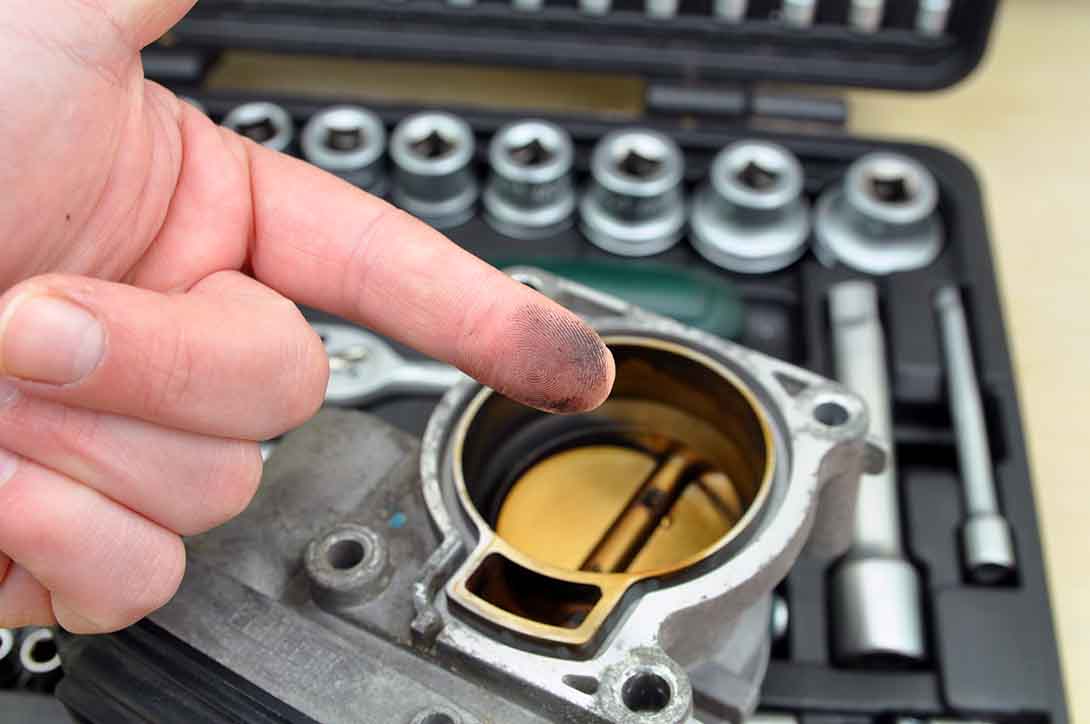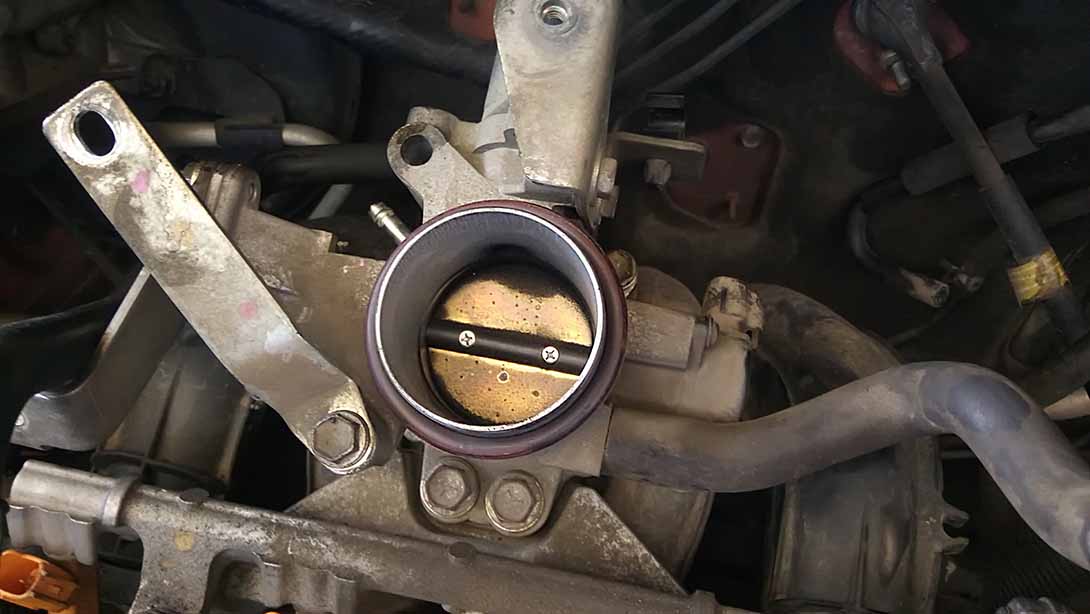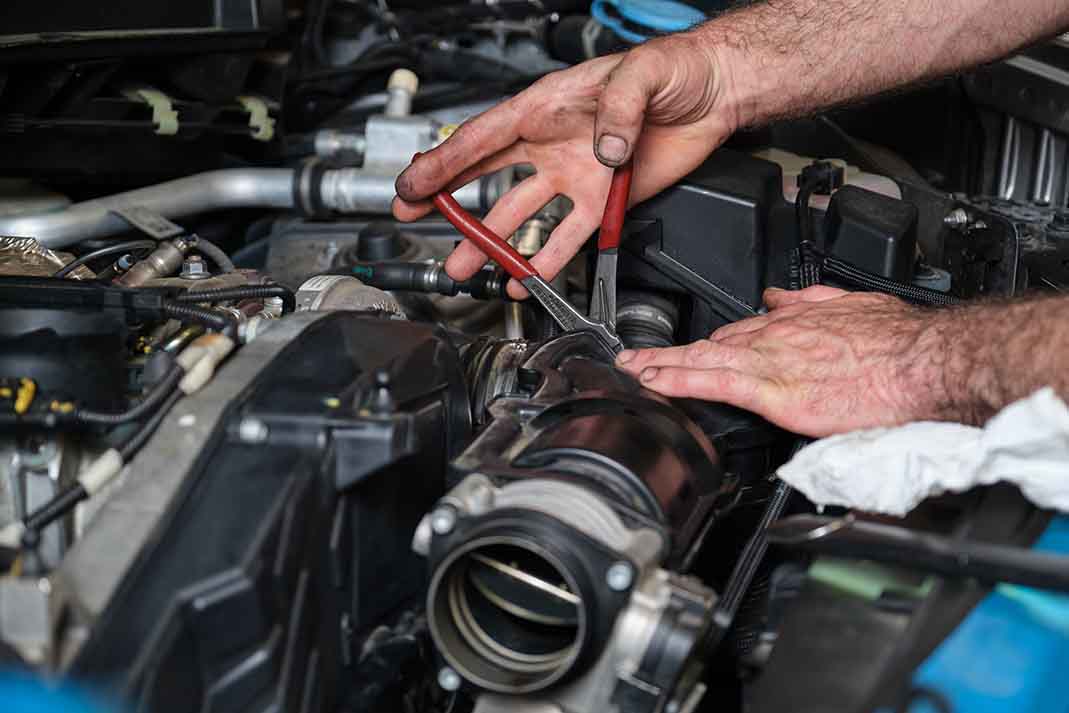How to Clean a Throttle Body
Share
In the intricate world of vehicle maintenance, throttle body cleaning can be overlooked. But it plays a crucial role. This vital component, nestled within the air intake system, commands air flow into the engine. When the throttle body accumulates grime and carbon deposits, it can significantly impede engine performance. Addressing this issue not only enhances fuel efficiency but also ensures smoother operation.
Don’t let throttle body cleaning slip through the cracks of your regular care checklist. This guide dives deep into the essentials of throttle body cleaning, outlining its importance, the tell-tale signs of a dirty throttle body, and the steps for effective cleaning and maintenance.

What is Throttle Body Cleaning?
Throttle body cleaning is a process designed to remove unwanted deposits from the inner walls of the throttle body. These deposits, primarily carbon and other contaminants, can disrupt the delicate balance of air and fuel entering your engine. This imbalance can trigger many problems, such as erratic idling, decreased fuel efficiency, and a noticeable lag in engine responsiveness. Regular cleaning ensures unobstructed airflow, which is pivotal for your vehicle's engine to operate smoothly and last longer.
Signs Your Throttle Body Needs Cleaning
Identifying when your throttle body requires cleaning is vital to timely maintenance. Common signs include unstable idling, where the engine seems to rev or stall without input, a noticeable dip in acceleration response, and overall sluggish acceleration. You might also experience unusual engine sounds or even stalling.
These symptoms often indicate that the throttle body is clogged with deposits, preventing it from properly regulating airflow. Being vigilant about these signs can help you address throttle body issues before they become more serious engine problems.

How to Choose Throttle Body Cleaner
Choosing the right throttle body cleaner is a critical step for effective maintenance. Almost all of the throttle body cleaners are aerosol sprays. These cleaners, designed for heavy-duty tasks, are packed with potent chemicals, making them toxic, flammable, and volatile. So, you should be careful when handling and using throttle body cleaners.
Prioritize safety by opting for a cleaner specifically made for throttle bodies, as mentioned on the product's label or instructions. Don’t use carburetor cleaner. Additionally, consider your vehicle's specific needs, as certain cleaners may be more suitable for specific engine types or throttle body materials.
How to Use Throttle Body Cleaner
- Locating the throttle body, usually between the intake manifold and air cleaner. Spot it by the throttle shaft movement when pressing the accelerator.
- Wear safety gear like rubber gloves and eye protection, and work in a well-ventilated area or outdoors.
- Disconnect the vehicle's battery. Start by removing the negative terminal.
- Remove any connected hoses or air ducts from the throttle body, using appropriate tools for clamps or screws. If you can't remove the air ducts, consider professional help instead of forcing them.
- Once accessible, apply the cleaner, scrub with a brush to loosen deposits, and wipe clean with a clean paper towel. Repeat this step until you remove all the carbon buildup and debris and see bare metal.
- Lightly lubricate the throttle shaft for smooth movement.
- Reassemble all parts, reconnect the battery, and test the vehicle’s performance.
DIY Throttle Body Cleaning vs. Professional Service
When it comes to throttle body cleaning, you can do it yourself or opt for professional services. DIY cleaning is a cost-effective solution for those who are comfortable with basic vehicle maintenance tasks. It offers a sense of accomplishment and a deeper understanding of your vehicle's workings. However, if you are unfamiliar with automotive components, you should ask for professional help.
While the process is not so different for drive-by-wire throttle vehicles, if your vehicle has a more complex electronic throttle body system, consider getting your throttle body cleaned by a professional. Professionals have the necessary tools and expertise to handle complicated setups and can also provide a thorough inspection of the throttle body and related components.

Maintenance Tips to Prevent Throttle Body Buildup
Preventing excessive buildup in the throttle body hinges on regular maintenance. Here are some proactive tips:
- Frequently replace your vehicle’s air filters to block dust and debris from invading the throttle body.
- Opt for high-quality fuel and oil, reducing the chances of residue and carbon deposits.
- Schedule routine engine check-ups to ensure all parts, including the throttle body, function optimally.
In summary, understanding and maintaining your throttle body is not just about enhancing your vehicle's performance; it's an adventure into the heart of your engine, promising a smoother, more efficient journey. Embrace this essential task with enthusiasm and expertise, and watch as your car thanks you with every mile.













